|
|
||||||||||
|
HOME
|
US Navy -
ships
|
US Navy - air
units
|
USMC - air
units
|
International
Navies
|
Weapon Systems
|
Special Reports |
||||||||||
|
|
||||||||||
|
|
||||||||||
|
United Kingdom - Royal Navy Colossus class Aircraft Carrier |
||||||||||
|
|
||||||||||
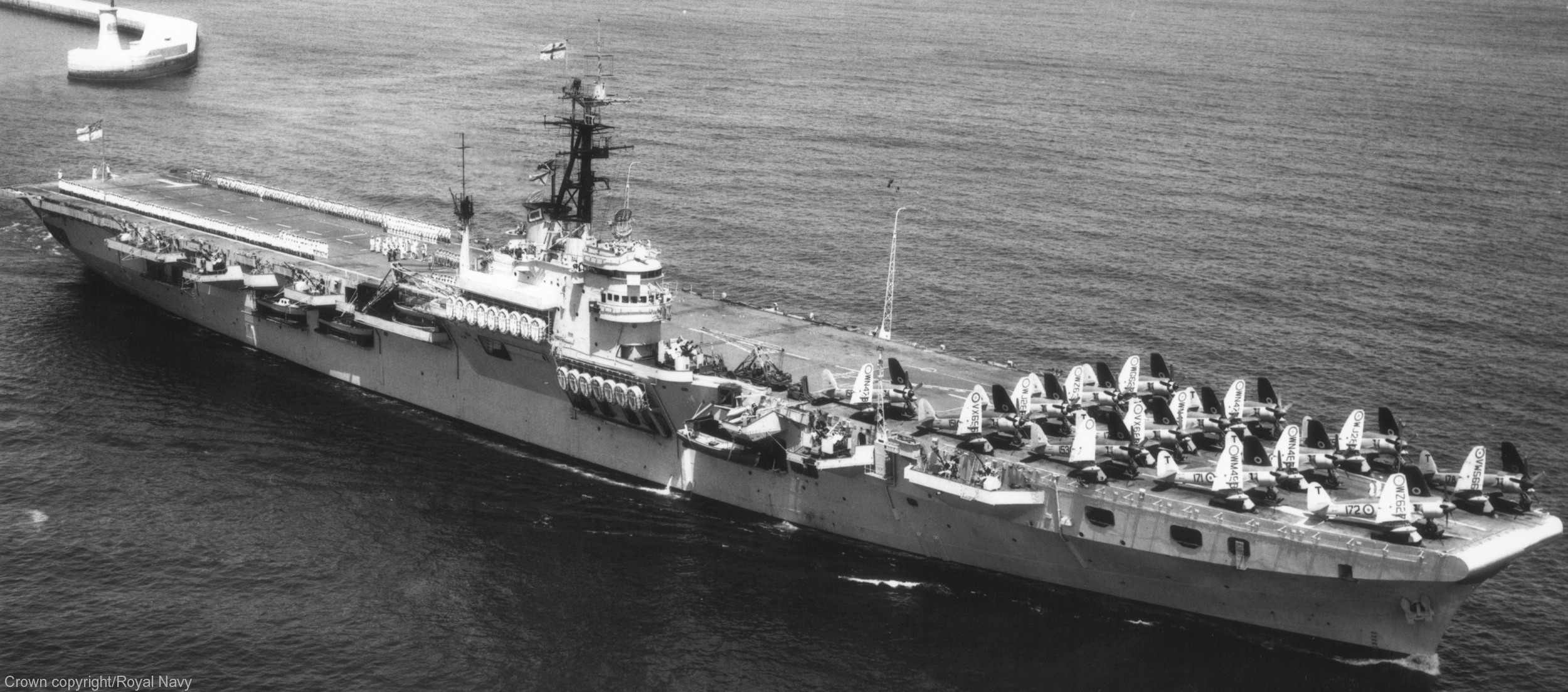 |
||||||||||
|
|
||||||||||
| Ships: | ||||||||||
|
R 15
HMS Colossus (1944) R 62 HMS Glory (1945) R 68 HMS Ocean (1945) R 63 HMS Venerable (1945) R 71 HMS Vengeance (1945) R 76 HMS Pioneer (1945) R 31 HMS Warrior (1948) R 64 HMS Theseus (1946) R 16 HMS Triumph (1946) R 51 HMS Perseus (1945) |
||||||||||
| Specifications: | ||||||||||
|
Length: 212 meters (695 ft) overall Beam: 24 meters (80 ft) Draft: 7,1 meters (23.3 ft) Displacement: 18000 tons (full load) Speed: 25 knots (46 km/h), max. Range: 12000 NM (22000 km) at 14 knots (26 km/h) Complement: 1050 Propulsion: Parsons geared turbines 4 x Admiralty 3-drum boilers 40000 Hp (30000 KW) 2 shafts / 2 propellers Aviation: full flight deck & hangar for up to 52 aircraft Armament: 6 x 4-barrelled 2-pounder AA guns 16 x twin 20mm Oerlikon AA guns > all weapons later replaced by 40mm Bofors in varying configurations |
||||||||||
|
|
||||||||||
|
The 1942 Design Light Fleet Carrier,
commonly referred to as the British Light Fleet Carrier, was a light
aircraft carrier design created by the Royal Navy during the Second
World War, and used by eight naval forces between 1944 and 2001.
They were designed and constructed by civilian shipyards to serve as
an intermediate step between the expensive, full-size fleet aircraft
carriers and the less expensive but limited-capability escort
carriers. Sixteen Light Fleet carriers were ordered, and all were laid down to the Colossus class design during 1942 and 1943. However, only eight were completed to this design; of these, four entered service before the end of the war, and none saw front line operations. Two more were fitted with maintenance and repair facilities instead of aircraft catapults and arresting gear, and entered service as aircraft maintenance carriers. The final six were modified during construction to handle larger and faster aircraft, and were redesignated the Majestic class. The construction of the six ships was suspended at the end of the war. Five were eventually completed with the last commissioning in 1961; however, the sixth, Leviathan, was dismantled for spare parts and scrap. Although not completed in time to fight in the war, the carriers in Royal Navy service participated in the Korean War and the Suez Crisis. During the latter, two Colossus-class ships performed the first ship-based helicopter assault in history. Four Colossuses and all five completed Majestics were loaned or sold to seven foreign nations - Argentina, Australia, Brazil, Canada, France, India, and the Netherlands - with three ships serving in three different naval forces during their careers. Foreign-operated Light Fleets took part in the Korean War, the First Indochina War, the Vietnam War, the 1971 Indo-Pakistani War, and the Falklands War. Despite being intended as 'disposable warships', all of the completed Light Fleet carriers exceeded their planned three-year service life. The maintenance carriers were the first to be paid off in the 1950s, and by the 1960s, all of the Royal Navy carriers, (bar Triumph, which was later recommissioned as a repair ship) had been sold to other nations or for ship breaking. The carriers in other navies had longer service lives. Design and construction: Experiences during the early part of the Second World War had demonstrated to the British that the Royal Navy needed access to defensive air cover for Allied fleets and convoys, which could only be provided by more aircraft carriers. In mid-1941, the Director of Naval Construction was instructed to investigate how best to achieve this without the lengthy construction times normally associated with carriers. The options were to refit the surviving Hawkins-class cruisers with flight decks and aviation facilities, convert additional merchant vessels and passenger liners into vessels similar to but more capable than previous merchant aircraft carriers, or create a new design for a cheap, lightly armed, and unarmoured ship similar to the Woolworth carriers. In December 1941, it was decided that a new design was the best option. This ship was conceived as an intermediate step between the expensive fleet carriers and the limited-capability escort carriers. The design had to be as simple as possible so construction time was kept to a minimum and so more shipyards (particularly those with no naval construction experience) could be used. However, the ships had to be capable of operating in fleet actions. Originally designated the 'Intermediate Aircraft Carrier', the ships were reclassified as 'Light Fleet Carriers'. Because naval design staff were overworked, the carrier was primarily designed by shipbuilders at Vickers-Armstrong. The Light Fleet design, completed at the start of 1942, was effectively a scaled-down Illustrious. Each carrier would displace 13,190 tons at standard load and 18,040 tons at full load, have a length of 680 feet (210 m) at the flight deck and 695 feet (212 m) overall, a maximum beam of 80 feet (24 m), and a draught of 18 feet 6 inches (5.64 m) at standard displacement, and 23 feet 6 inches (7.16 m) at full load displacement. The hull was built to Lloyd's specifications for merchant vessels from keel to maindeck, but incorporated better subdivision of compartments to reduce secondary damage by flooding. The propulsion machinery was of a similar design to that used in cruisers - some of the steam turbines were sourced from cancelled cruisers. The machinery was arranged in two compartments (each containing two Admiralty 3-drum boilers and a Parsons geared turbine, which were staggered en echelon, with the starboard compartment forward of the port. These provided 40,000 shaft horsepower to two propeller shafts, driving the carriers at a maximum speed of 25 knots (46 km/h; 29 mph), with 15 knots (28 km/h; 17 mph) as the designated economical speed. The carriers were intended to be 'disposable warships': to be scrapped and replaced at the end of the war or within three years of entering service. However, all exceeded this planned service life, with one ship operating from 1945 to 2001. Colossus class: Construction was approved by the Naval Board in February 1942, with the first two ships, Colossus and Glory, laid down in March. During 1942 and 1943, another fourteen Light Fleet carriers (named the Colossus class after the lead ship) were laid down under the 1942 Programme, to be constructed by eight British shipyards. Although it was originally planned that each Light Fleet would be ready for service in 21 months, modifications to the design saw the planned construction time increase to 27 months. Even with the omission of several important pieces of backup equipment, only two ships met this target. The ships were launched from late 1943 onwards, with the first commissioned in December 1944. However, the delays meant that only four ships (Colossus, Glory, Venerable, and Vengeance; formed up as the 11th Aircraft Carrier Squadron) were completed before the end of the Second World War, and only eight of the sixteen planned Light Fleets were completed as Colossus-class carriers. During operational service, the living conditions aboard the Colossus-class ships were criticised, which resulted in the abolition of hammocks in favour of fixed bunks and the introduction of centralised eating arrangements in later warship designs. Maintenance carriers: The impracticality of shore-based repair establishments in the Far East and Pacific theatres of the Second World War saw a requirement for aircraft maintenance carriers. Instead of building new ships from scratch, two under-construction Colossuses, Perseus and Pioneer, were marked for conversion as they would enter service quicker, and could be converted back into operational aircraft carriers if required, a need which never arose. Both ships were completed before the end of the war, with Pioneer sailing to the Pacific in company with the 11th Aircraft Carrier Squadron, but neither ship saw active service. As the ships were designed with the repair and transportation of aircraft in mind, much of the equipment required for carrier flight operations, including control facilities, arresting gear, and catapult, were not installed. This space was instead used for additional hangar room, repair and maintenance workshops, and system testing facilities. Majestic class: The six remaining Light Fleet hulls were originally to be completed as Colossus-class ships, but the rapid development of carrier-based aircraft and anti-aircraft weapons required modifications to the original design. The catapult, arrestor cables, and aircraft lifts had to be upgraded to handle faster and heavier aircraft, while the flight deck was reinforced. Improved weapons and radars were fitted, and equipment to perform replenishment at sea was installed. The modifications increased the full-load displacement by 1,500 tons, and the draught by 1 foot 6 inches (0.46 m). This led to the six ships being reclassified as the Majestic class in September 1945. Five carriers were launched before the end of the Second World War, with the sixth launched in late September 1945. Following the war's end, work on the Majestic class was suspended, then restored to a low-priority status, with the rate of work increasing as foreign nations purchased the ships. Two, Magnificent and Terrible, entered service more-or-less as designed, but the next three were heavily upgraded with three British developments allowing the operation of large, fast, jet-propelled aircraft: the angled flight deck, the steam catapult, and the mirror landing aid. The sixth, Leviathan, was not completed. Work was suspended in May 1946, and plans to convert her into a commando carrier or missile cruiser, or sell her to a foreign buyer, fell through. During the 1950s, she was used as an accommodation ship in Portsmouth Harbour and, in 1966, her boilers were removed and sold to the shipyard refitting the Colossus-class HNLMS Karel Doorman for Argentine service. Leviathan was scrapped in May 1968. None of the completed Majestic-class vessels saw service in the Royal Navy. In 1943, eight 'Improved Majestics' were planned, but developments in carrier aviation and the rapid obsolescence of the Light Fleets and the wartime armoured carriers required a larger and more capable design, which became the four-ship Centaur class. Aircraft: In the original design, each ship was capable of carrying 41 aircraft. A redesign of the available parking area on the flight deck in March 1942 saw the ships' air group expanded to 24 Fairey Barracuda torpedo bombers and 24 Supermarine Seafire fighters, or 18 Barracudas and 34 Seafires. In RN service, the Barracuda was later replaced by the Fairey Firefly, and the Seafire was superseded by the Hawker Sea Fury during the Korean War. Early in their careers, Glory and Ocean were fitted out for night flying operations: these carriers were to embark a 32-strong air group; mixed between Fireflies and Grumman F6F Hellcats supplied by the United States as part of the Lend Lease program. To launch and recover aircraft, the carriers were initially equipped with hydraulic catapults, arresting gear, and crash barriers. Aircraft were stored in a single hangar measuring 445 by 52 feet (136 by 16 m), with a height clearance of 17 feet 6 inches (5.33 m). This allowed the Light Fleets to later operate aircraft that the fleet carriers, which generally had two hangars with lower clearance in each, could not. The hangar was serviced by two aircraft lifts. Armament: The Light Fleets were the first British aircraft carriers where the ship's air group was seen as the 'main armament'; any mounted weapons were to be for close-range anti-aircraft defence. The Colossus design called for six quadruple barrelled 2 pounder gun mounts, and 16 twin Oerlikon 20 mm cannons. Two 4-inch (102 mm) guns were originally included, but an increase in the design's flight deck length in March 1942 saw them displaced. The ships were unarmoured, as increasing the size of the vessels was deemed more important than protection. Lessons learned during the early part of the Pacific War showed the superiority of the Bofors 40 mm gun to other anti-aircraft weapons. By the end of the war, all Colossus-class ships had swapped all their other weapons for Bofors in single and twin mountings, and the Majestic design had been modified to carry 30 of the guns: 18 single mountings, and 6 twin mountings. The number of Bofors carried by the Light Fleets was reduced after the war, with British ships carrying only eight. source: wikipedia |
||||||||||
|
|
||||||||||
| Ships: | ||||||||||
|
||||||||||
|
images |
||||||||||
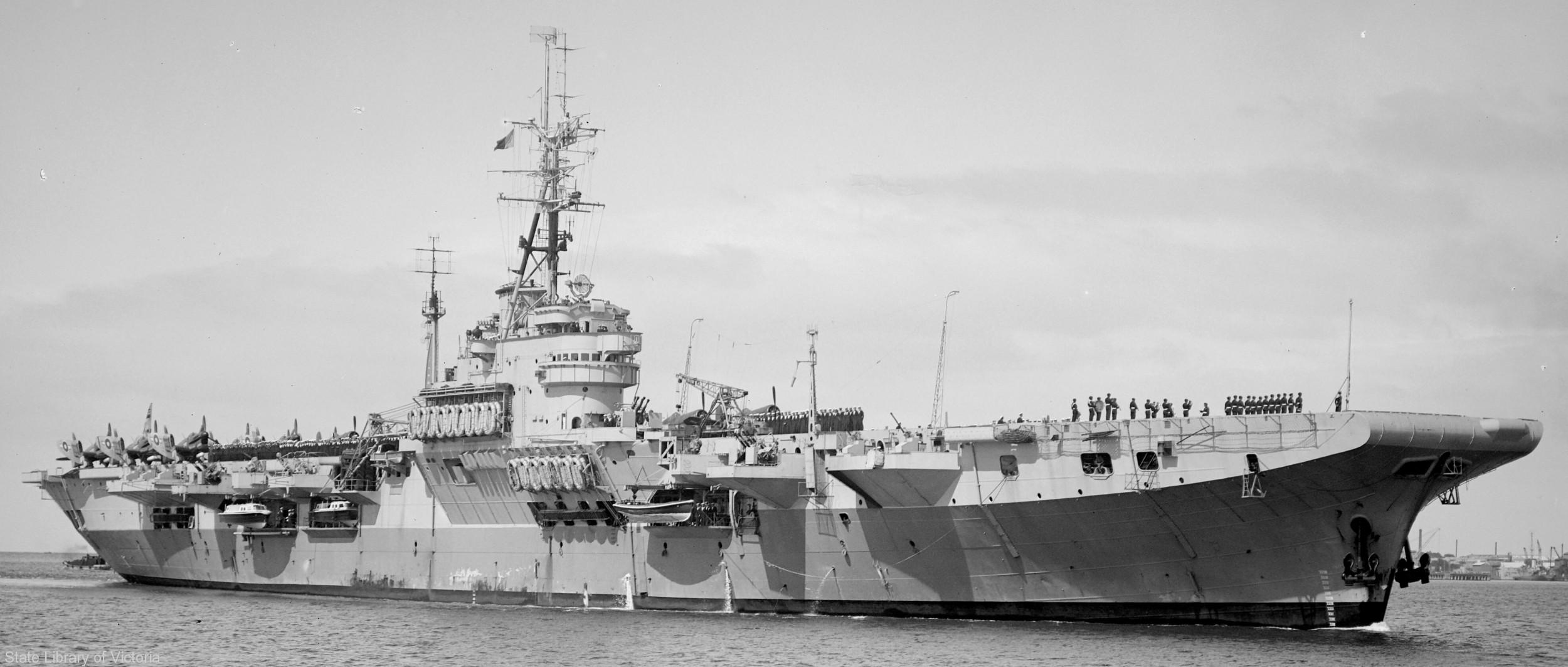 R62 HMS Glory 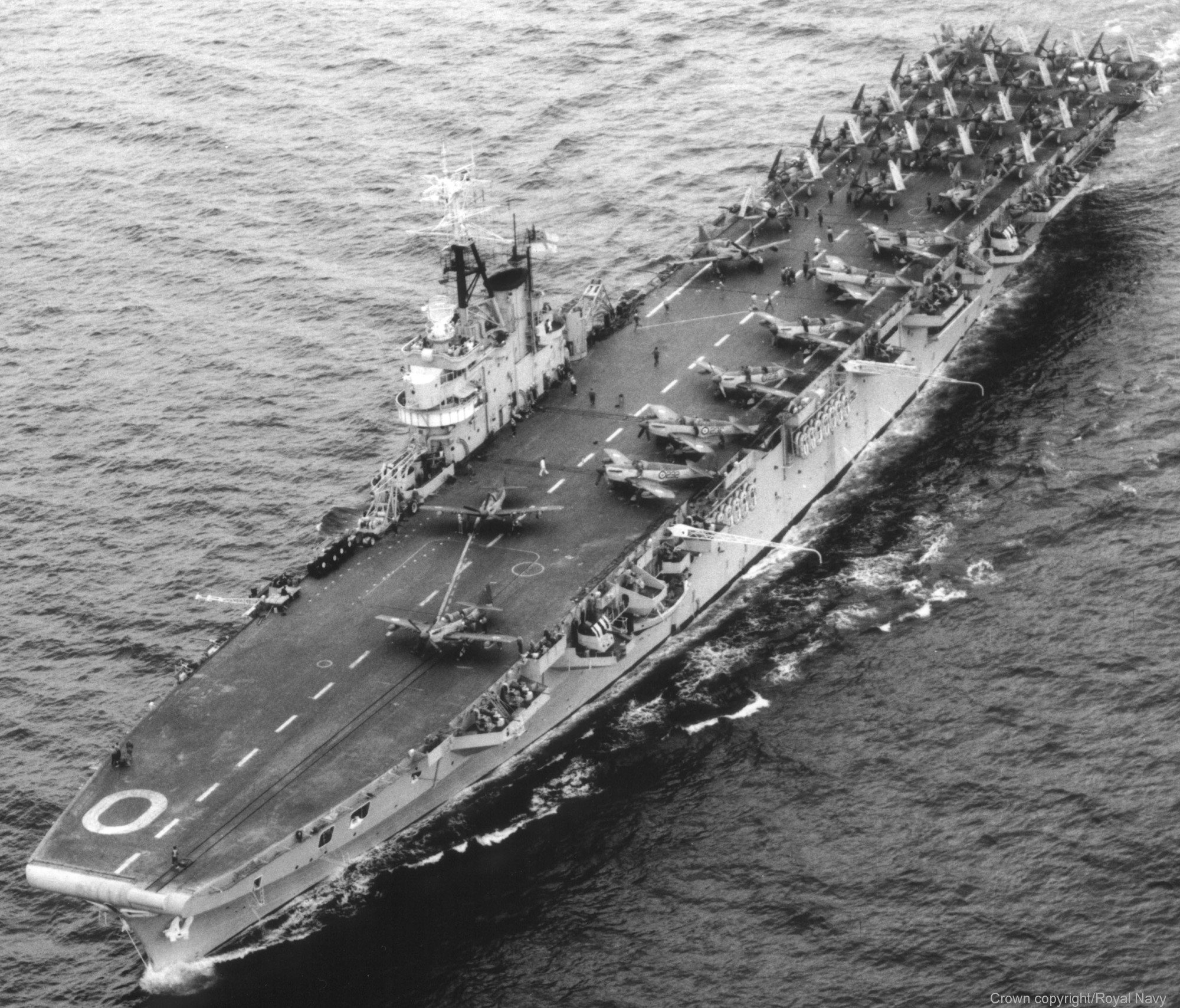 R68 HMS Ocean 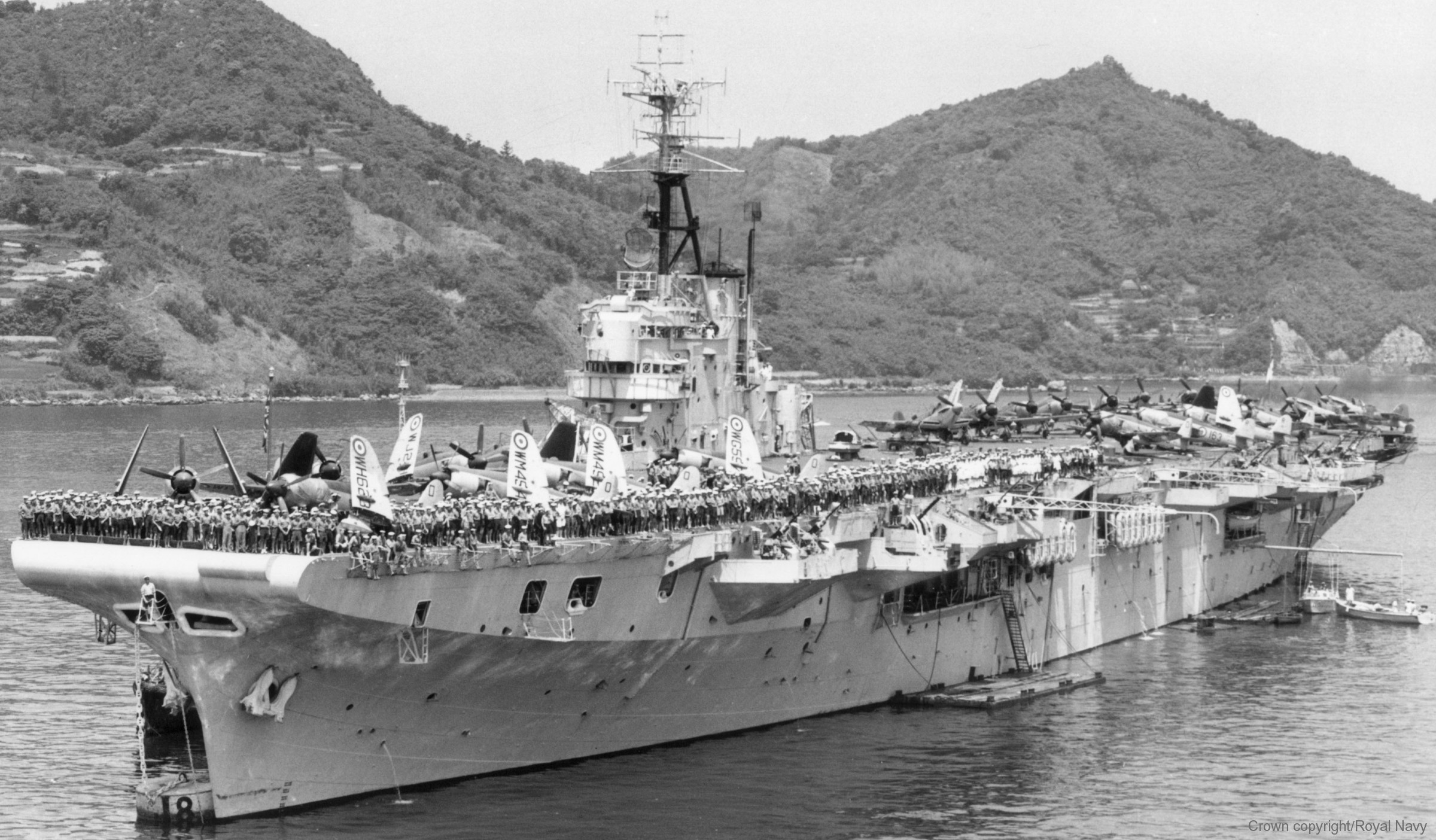 R68 HMS Ocean 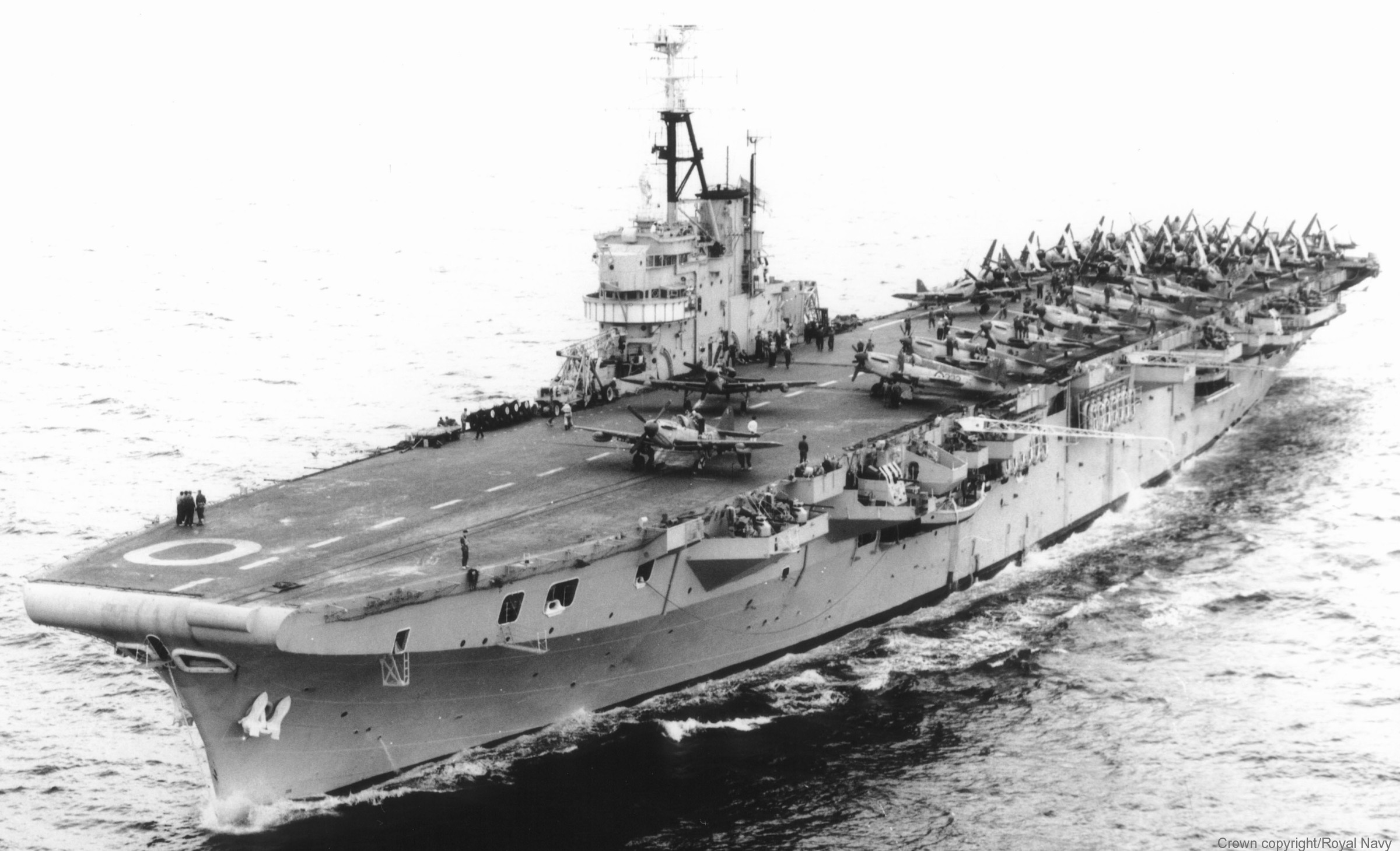 R68 HMS Ocean 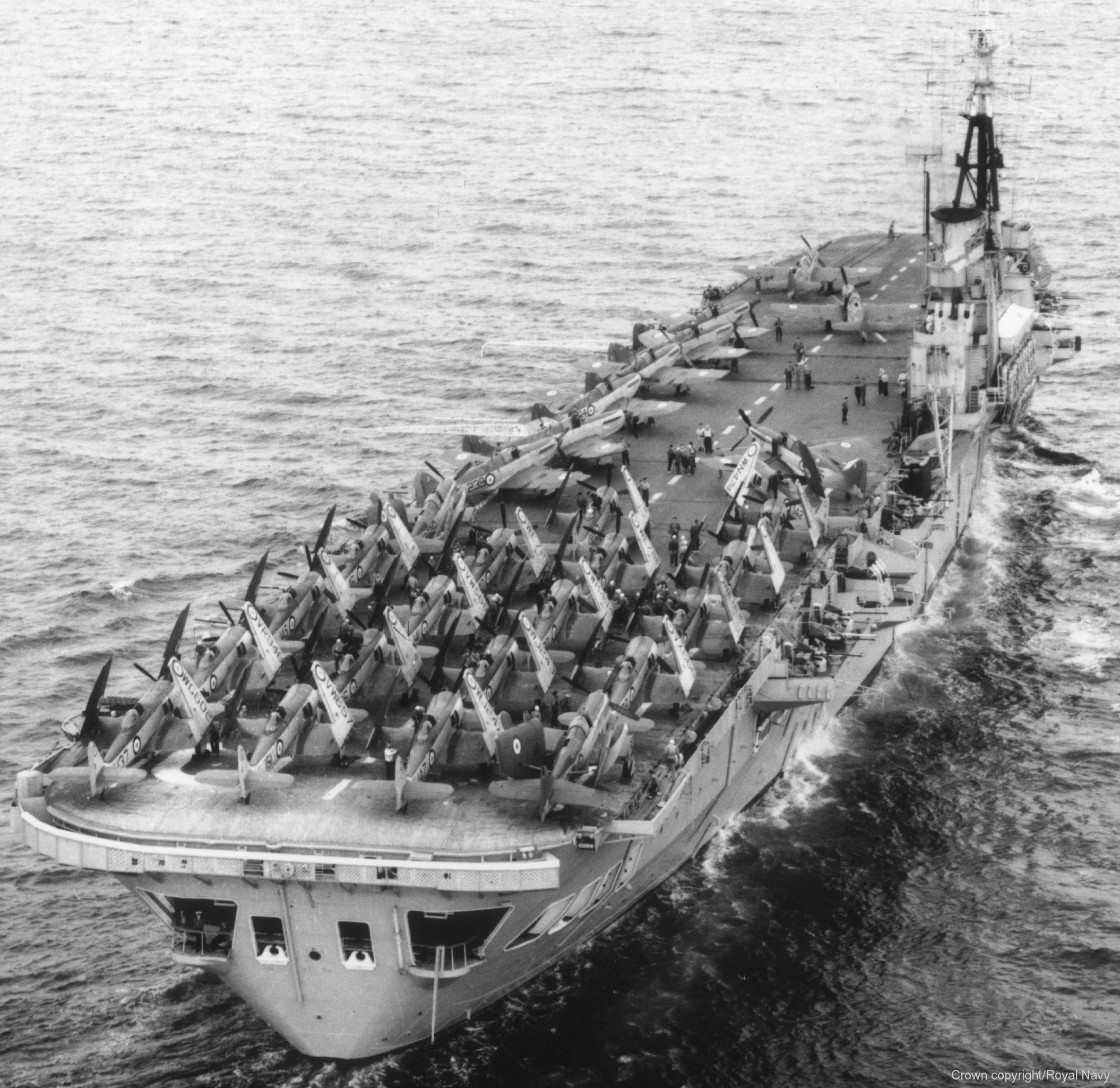 R68 HMS Ocean 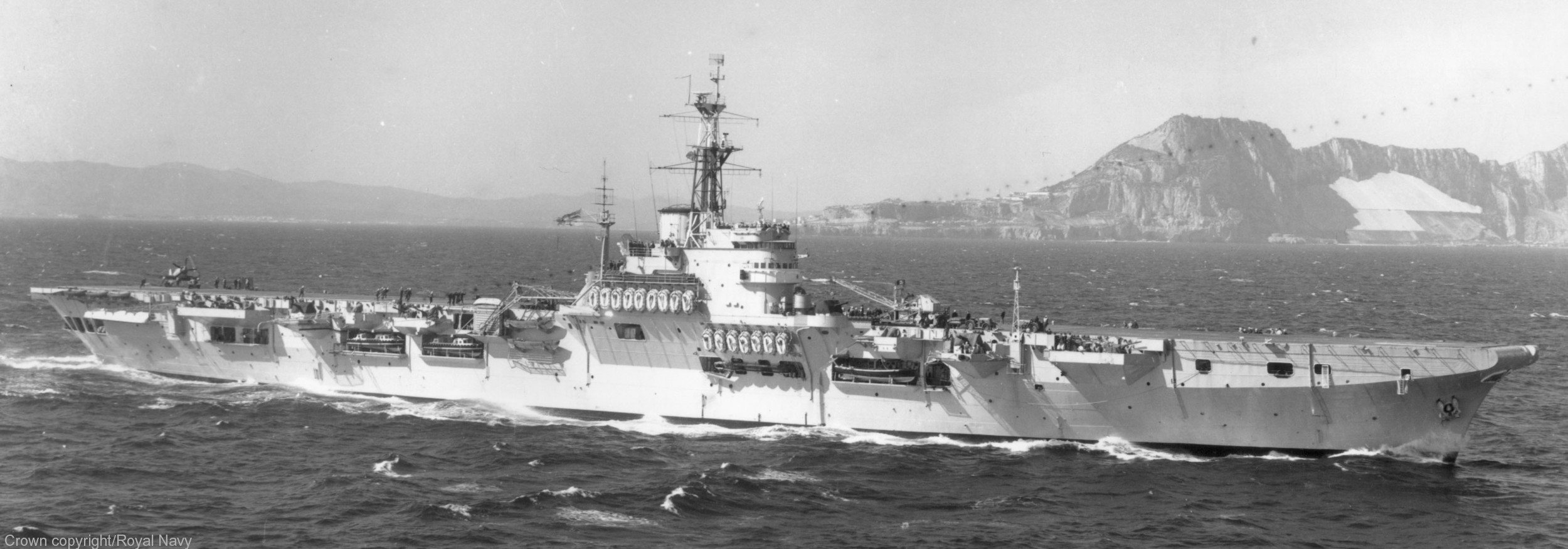 R31 HMS Warrior 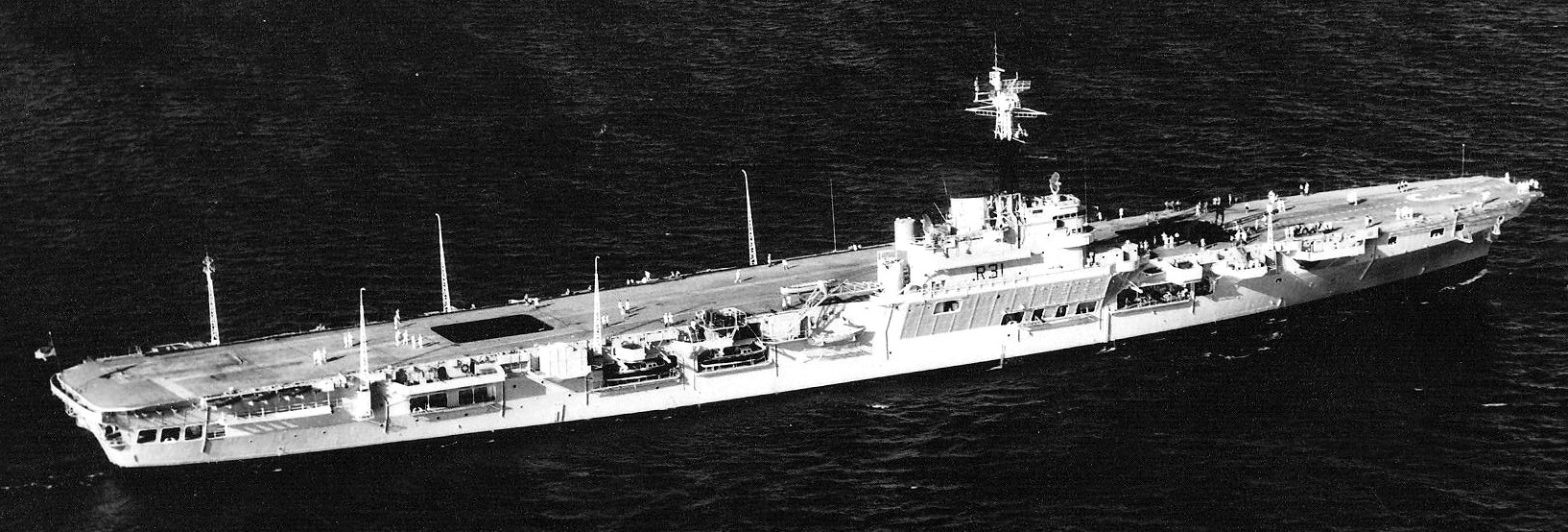 R31 HMS Warrior  R64 HMS Theseus 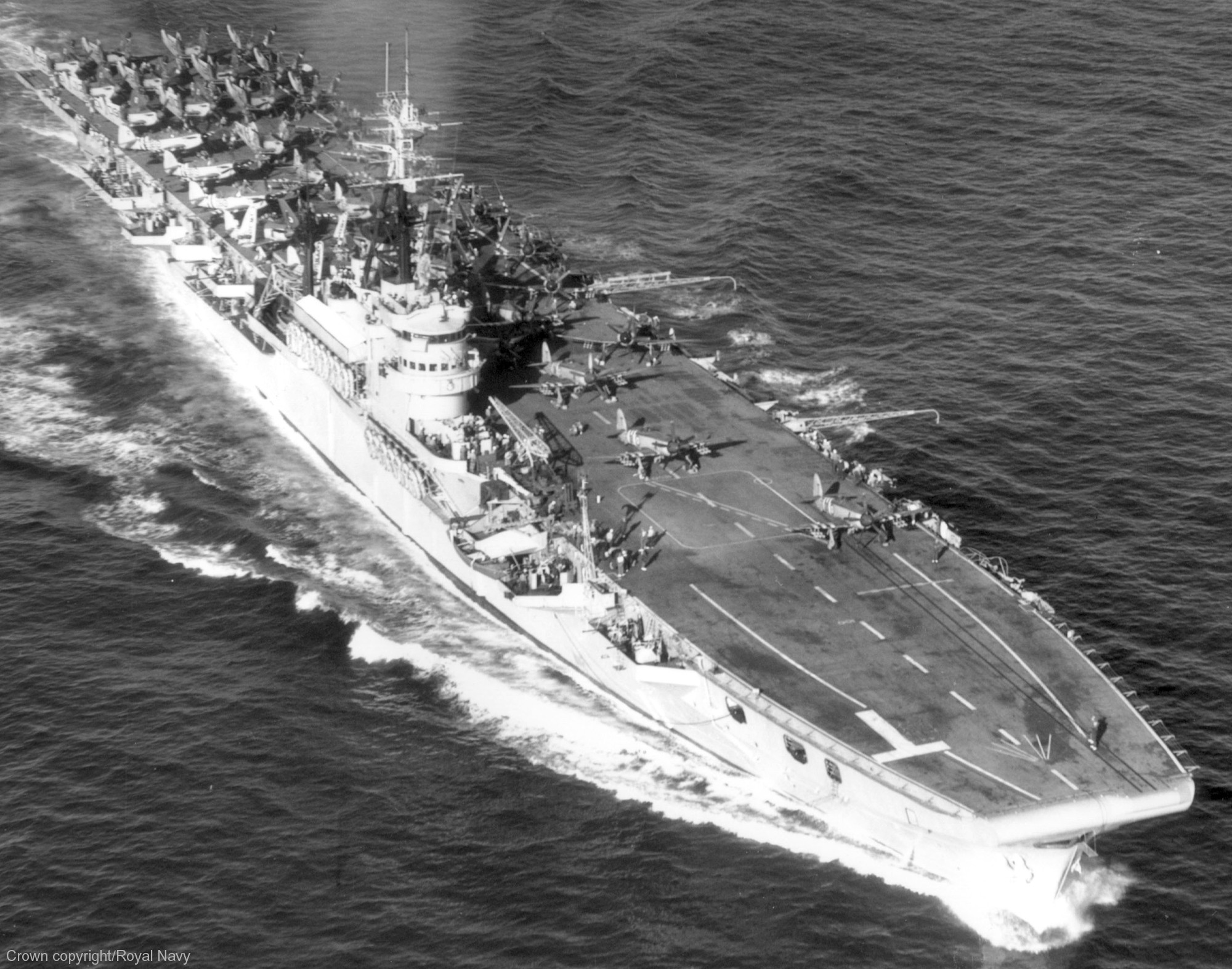 R64 HMS Theseus 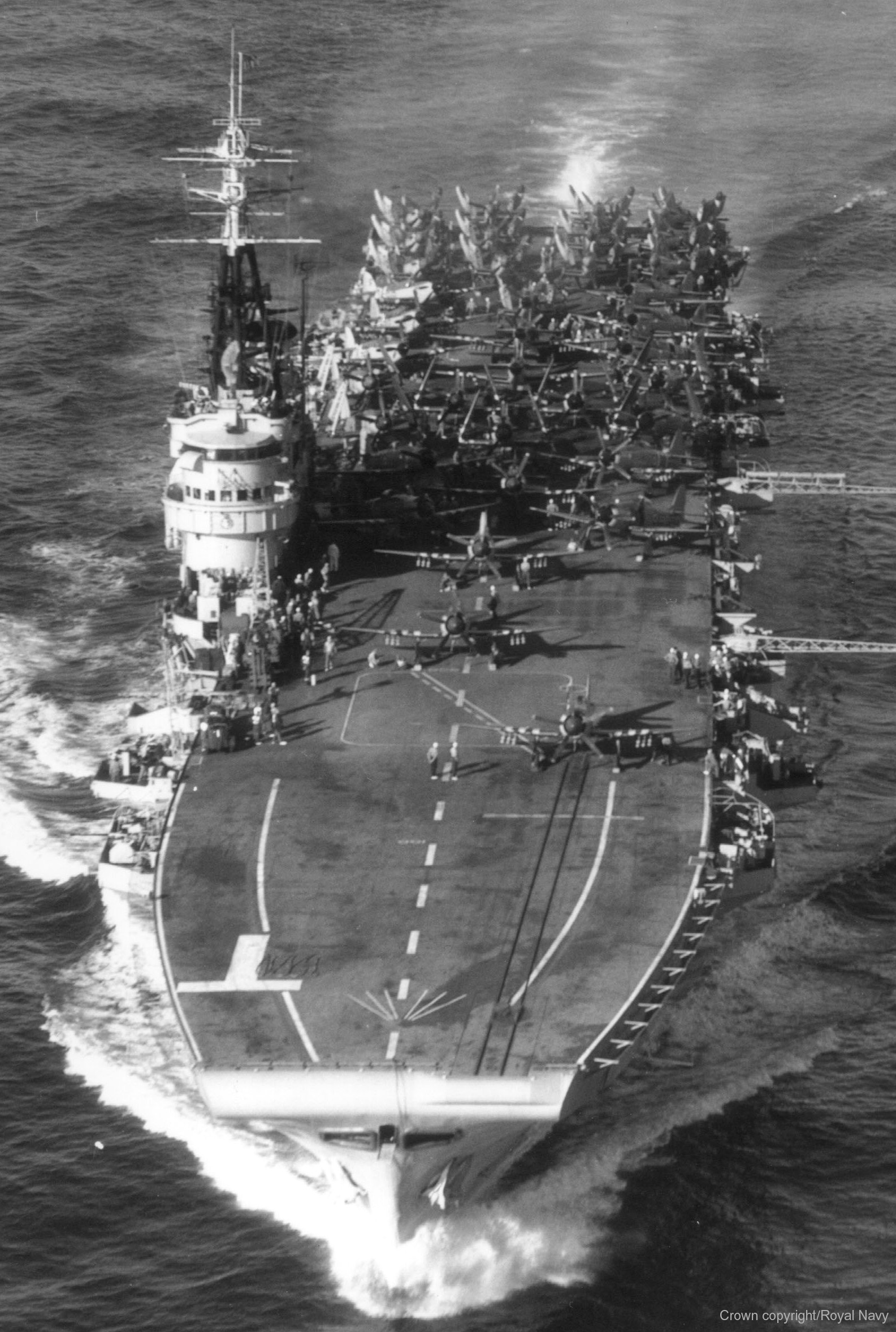 R64 HMS Theseus 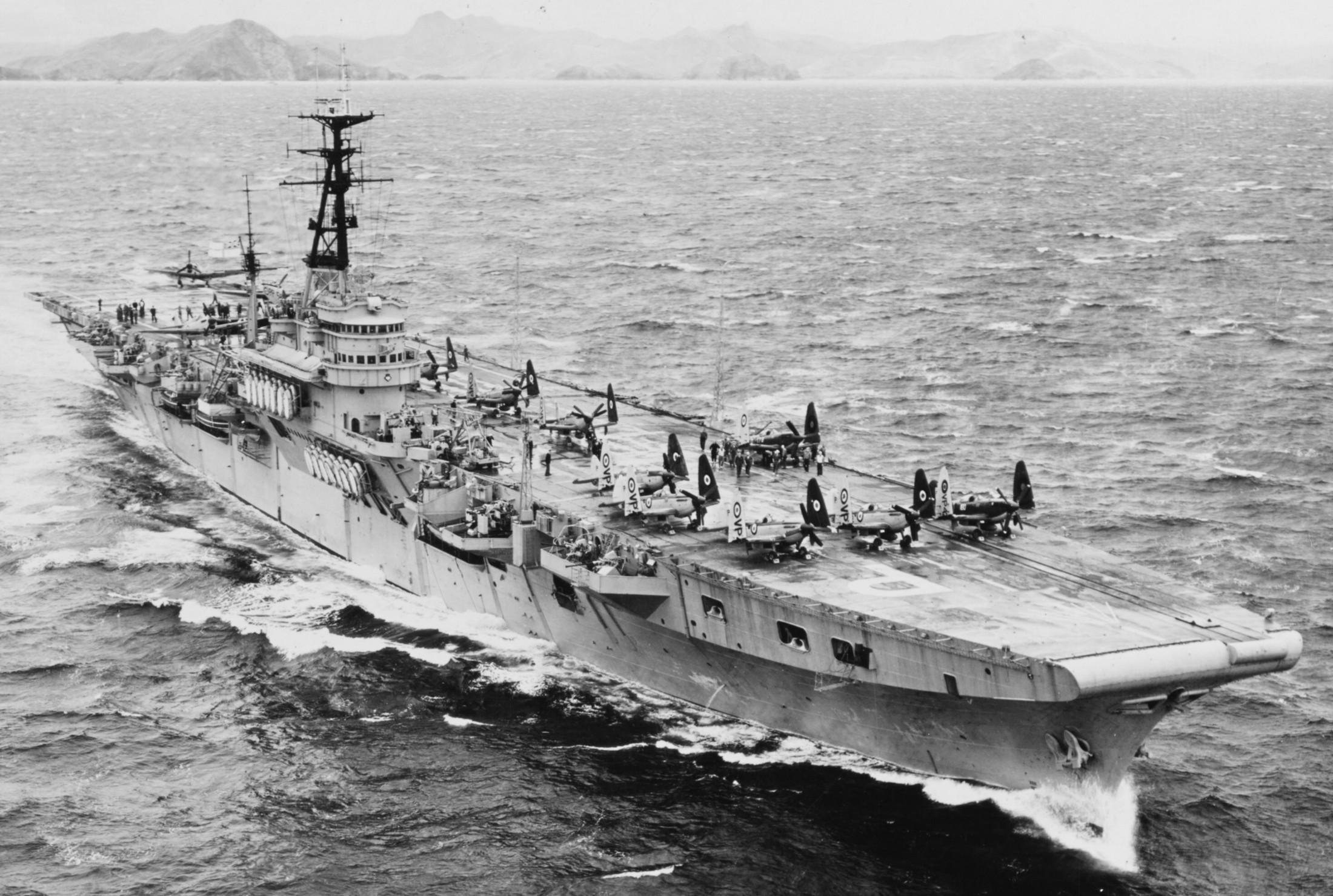 R16 HMS Triumph Colssus class Aircraft Carrier in foreign service: 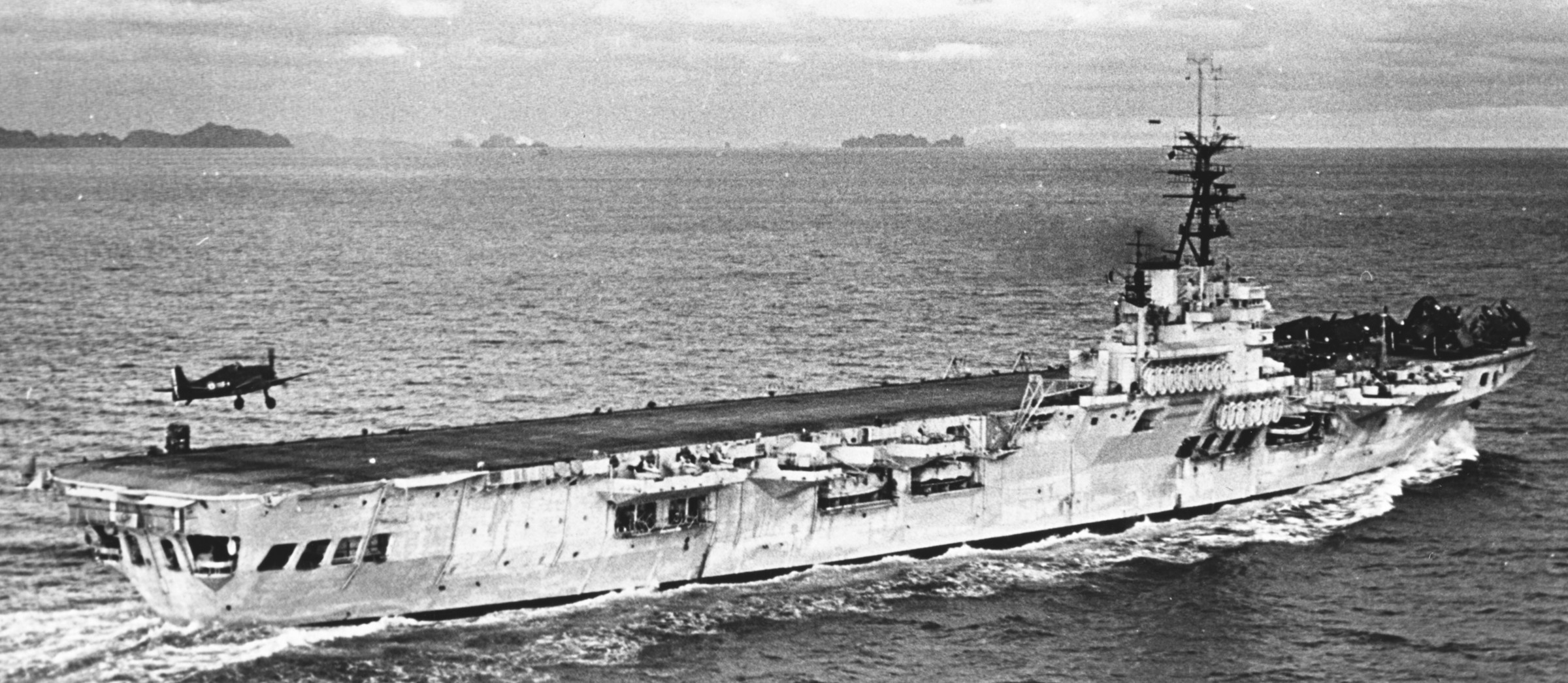 R95 FS Arromanches - French Navy (ex R15 HMS Colossus) 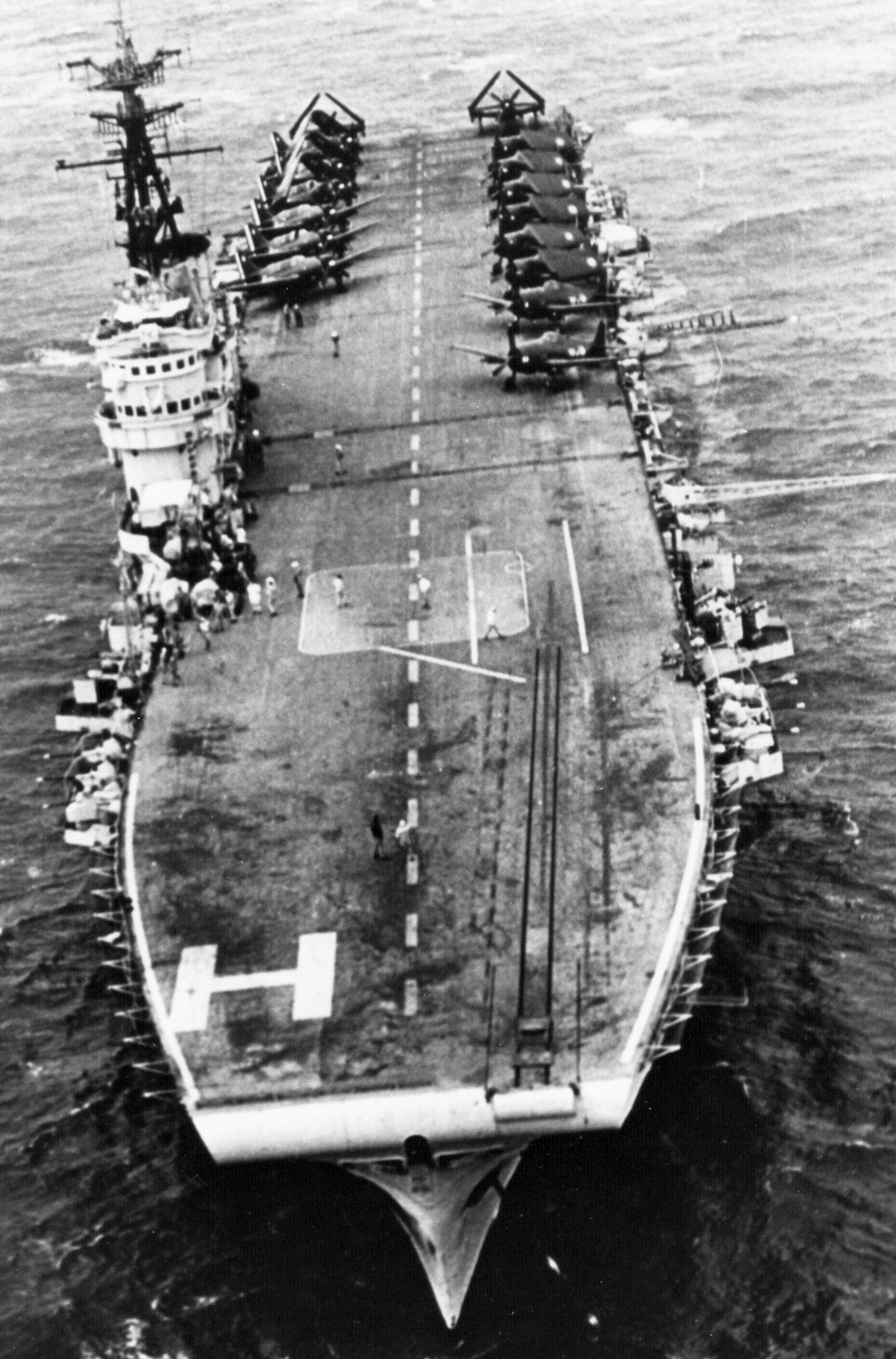 R95 FS Arromanches - French Navy (ex R15 HMS Colossus) 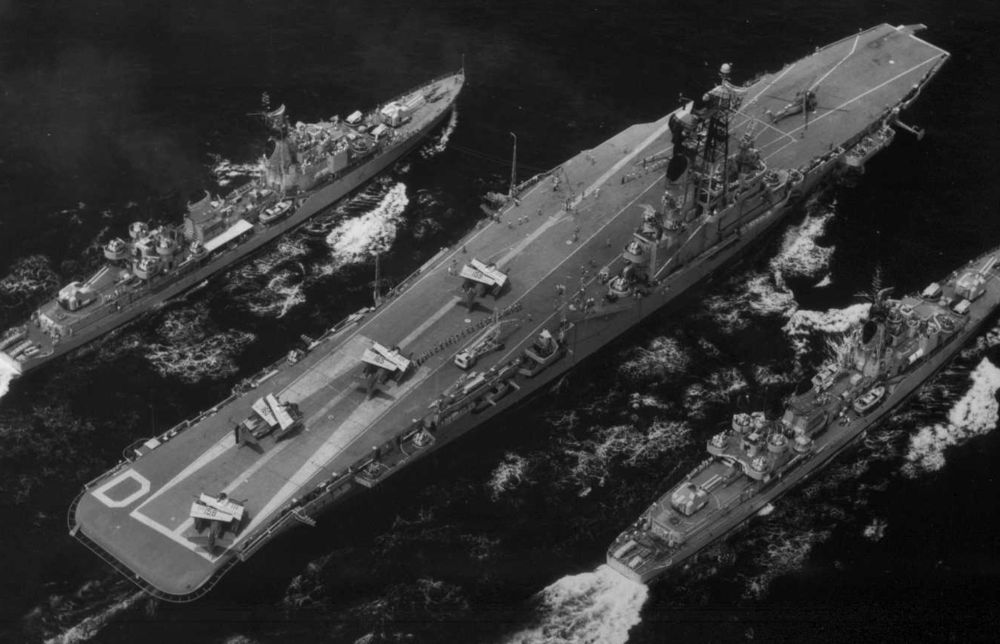 R81 HNLMS Karel Doorman - Royal Netherlands Navy (ex R63 HMS Venerable) 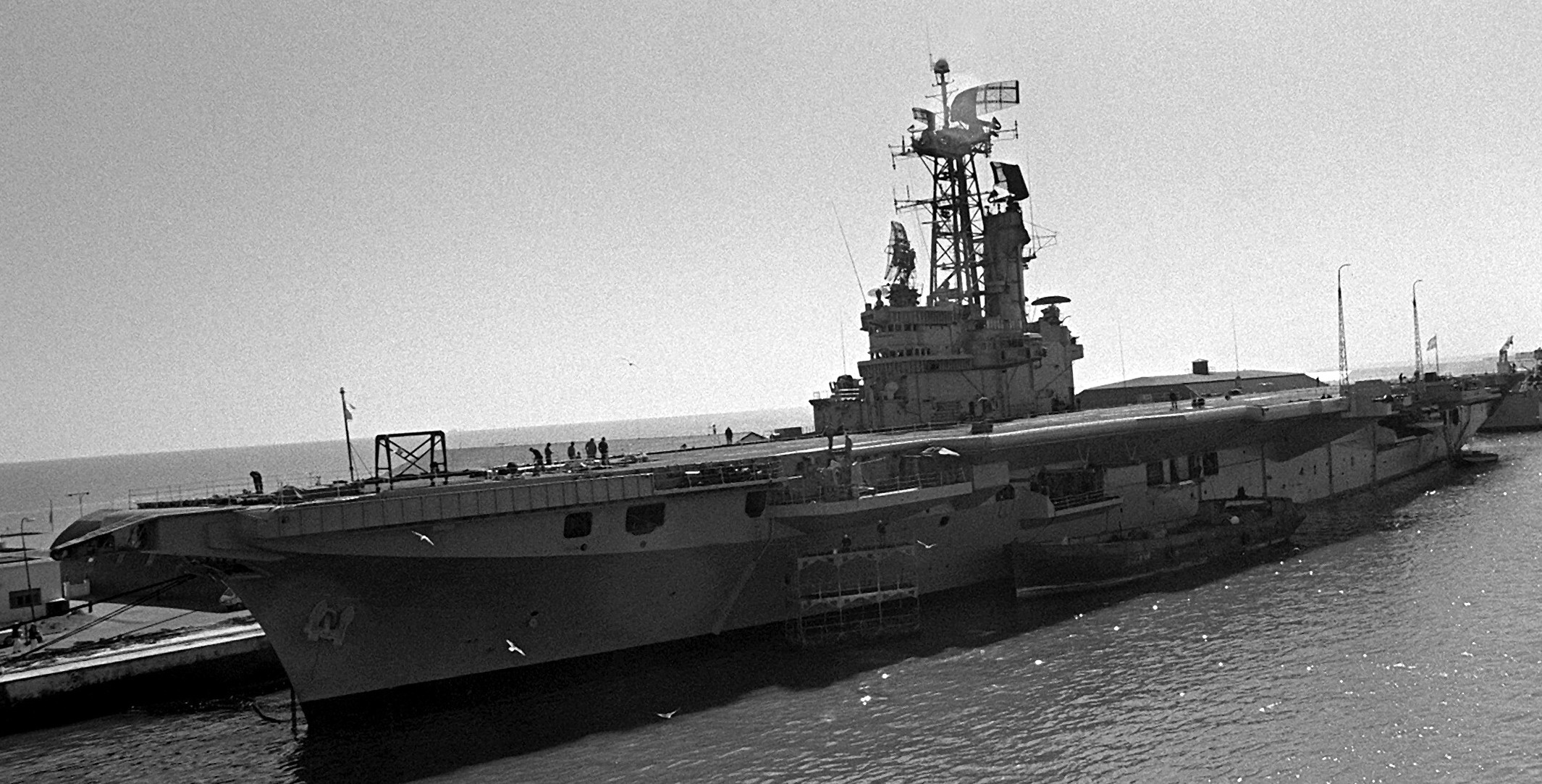 V-2 ARA Veinticinco de Mayo - Argentine Navy (ex R63 HMS Venerable / ex R81 HNLMS Karel Doorman)  R71 HMAS Vengeance - Royal Australian Navy (ex R71 HMS Vengeance)  A11 NAeL Minas Gerais - Brazilian Navy (ex R71 HMS Vengeance / ex R71 HMAS Vengeance) 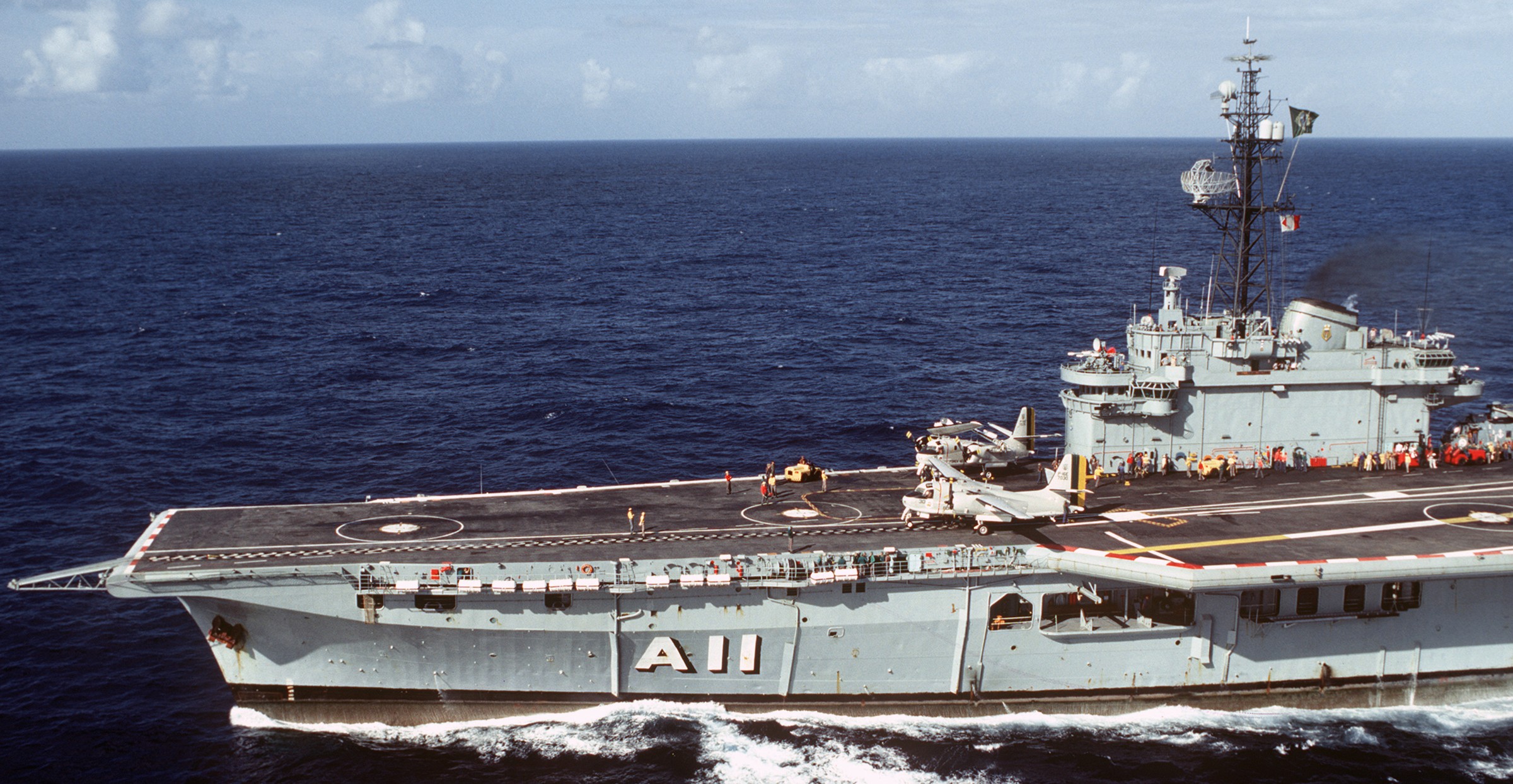 A11 NAeL Minas Gerais - Brazilian Navy (ex R71 HMS Vengeance / ex R71 HMAS Vengeance) 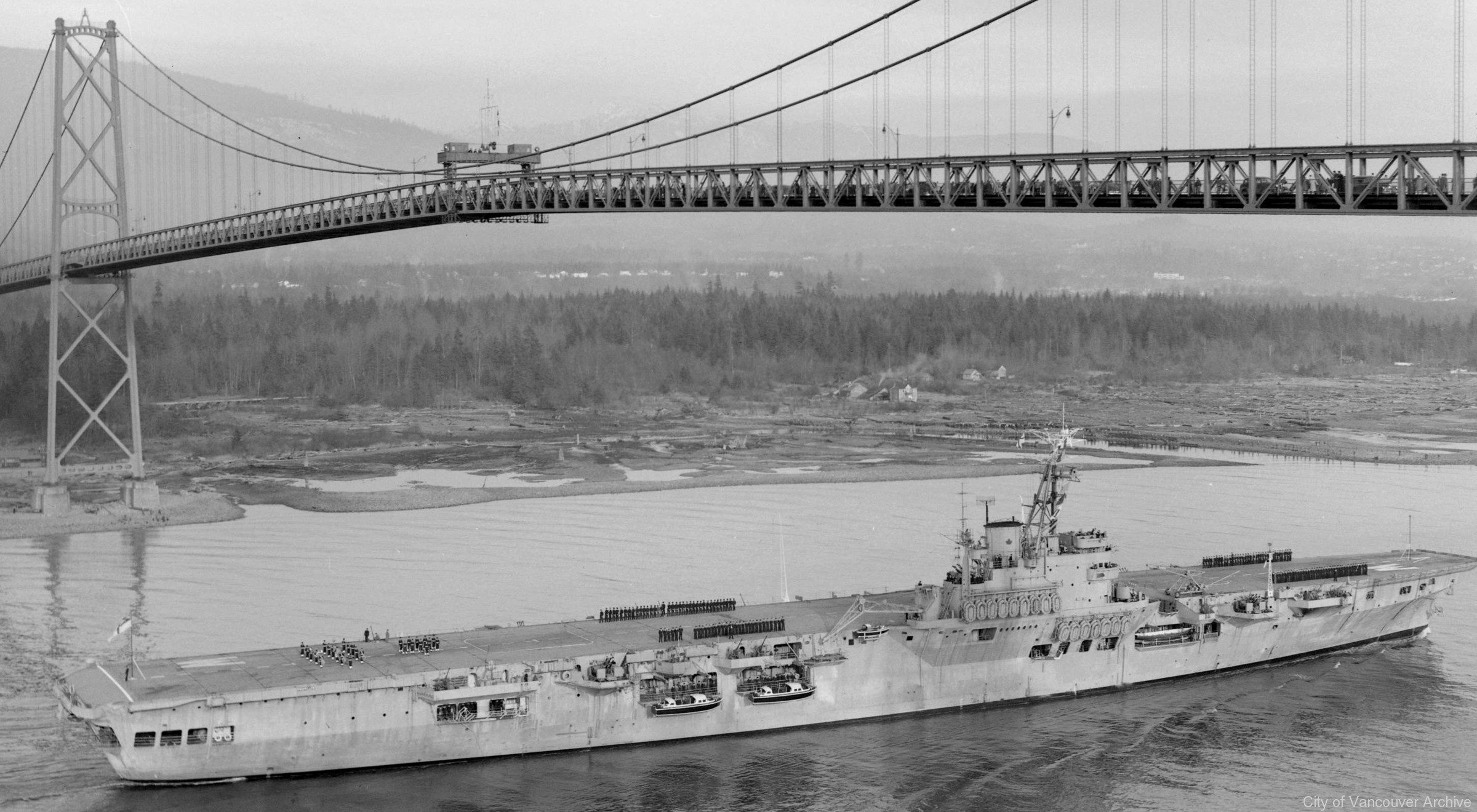 R31 HMCS Warrior - Royal Canadian Navy (ex R31 HMS Warrior) 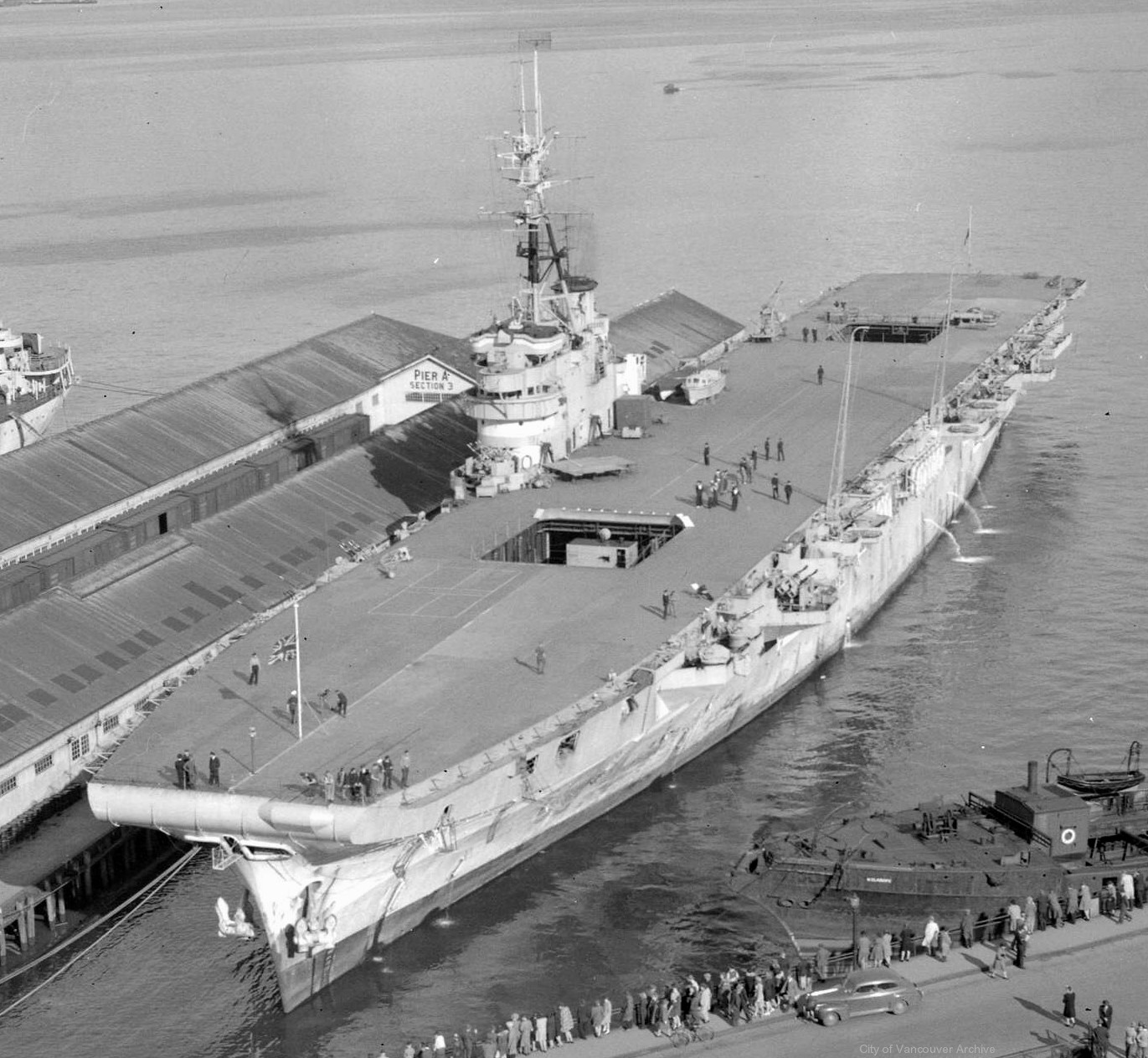 R31 HMCS Warrior - Royal Canadian Navy (ex R31 HMS Warrior) 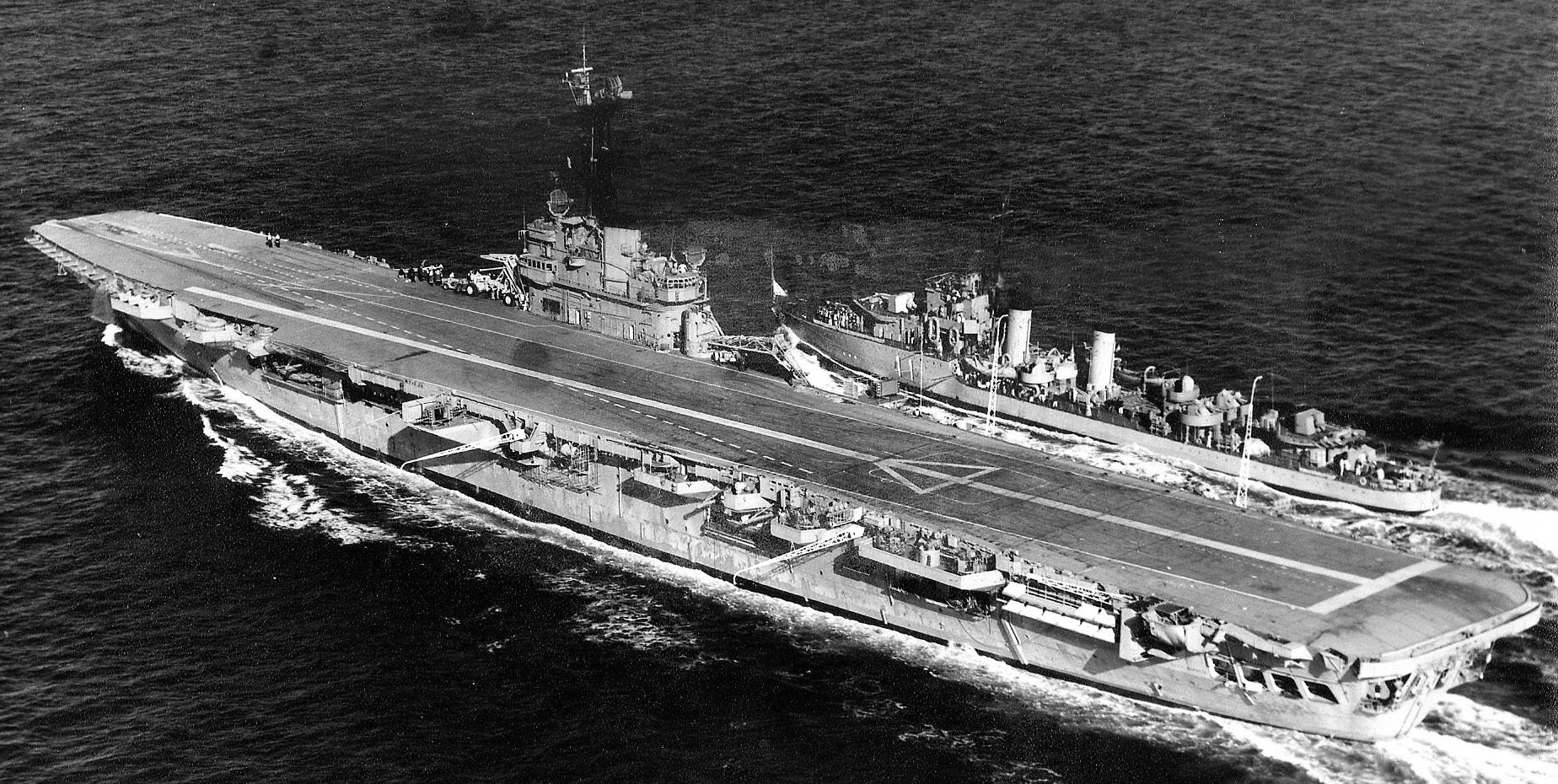 V-1 ARA Independencia - Argentine Navy (ex R31 HMS Warrior / ex R31 HMCS Warrior) |
||||||||||
|
|
||||||||||
|
|
seaforces.org
|
Royal
Navy start page
| |
